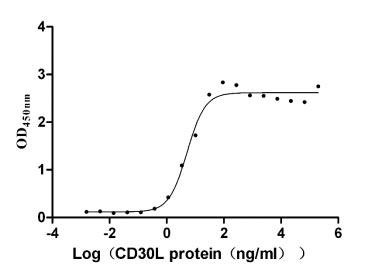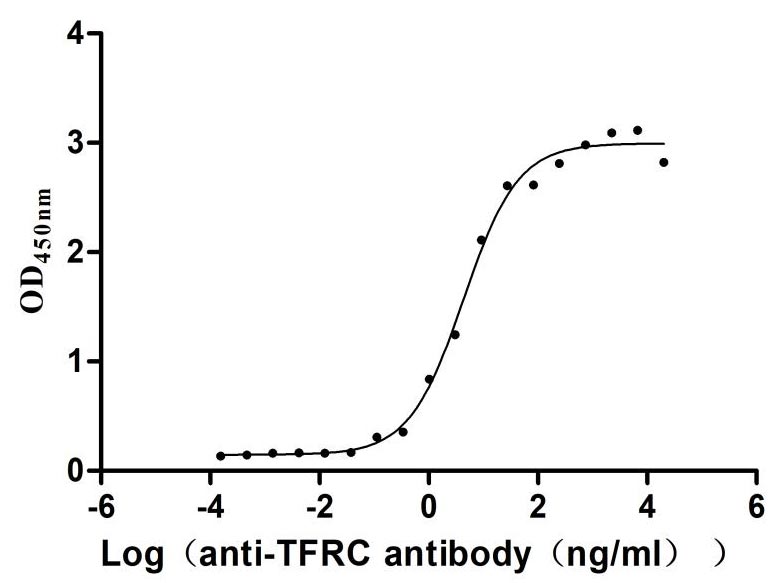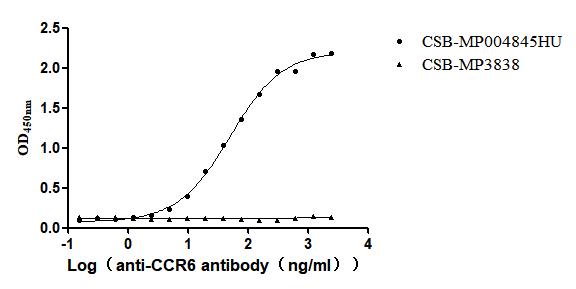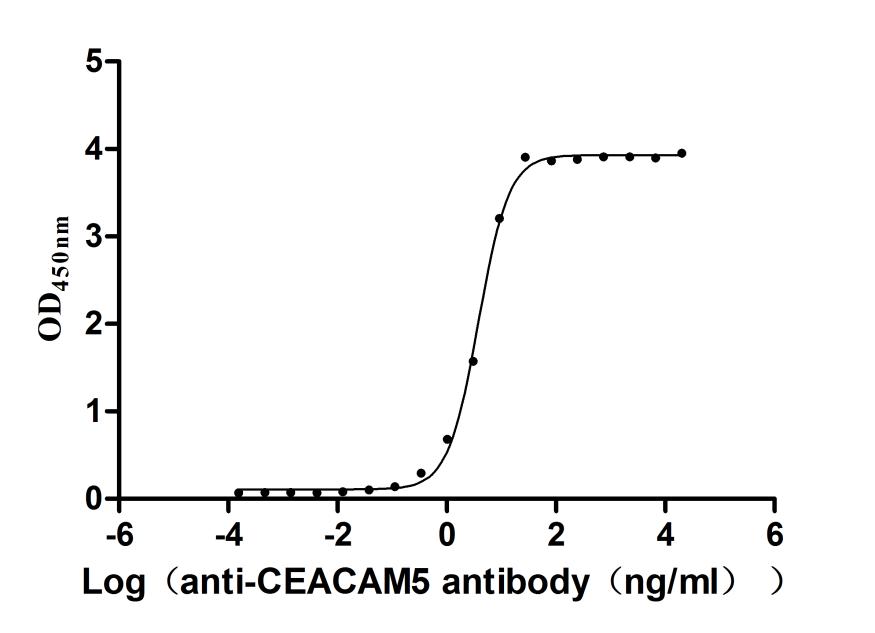Recombinant Mouse Peroxisome proliferator-activated receptor gamma coactivator 1-beta (Ppargc1b), partial
-
中文名称:小鼠Ppargc1b重组蛋白
-
货号:CSB-YP840869MO
-
规格:
-
来源:Yeast
-
其他:
-
中文名称:小鼠Ppargc1b重组蛋白
-
货号:CSB-EP840869MO
-
规格:
-
来源:E.coli
-
其他:
-
中文名称:小鼠Ppargc1b重组蛋白
-
货号:CSB-EP840869MO-B
-
规格:
-
来源:E.coli
-
共轭:Avi-tag Biotinylated
E. coli biotin ligase (BirA) is highly specific in covalently attaching biotin to the 15 amino acid AviTag peptide. This recombinant protein was biotinylated in vivo by AviTag-BirA technology, which method is BriA catalyzes amide linkage between the biotin and the specific lysine of the AviTag.
-
其他:
-
中文名称:小鼠Ppargc1b重组蛋白
-
货号:CSB-BP840869MO
-
规格:
-
来源:Baculovirus
-
其他:
-
中文名称:小鼠Ppargc1b重组蛋白
-
货号:CSB-MP840869MO
-
规格:
-
来源:Mammalian cell
-
其他:
产品详情
-
纯度:>85% (SDS-PAGE)
-
基因名:Ppargc1b
-
Uniprot No.:
-
别名:Ppargc1b; Errl1; Pgc1; Pgc1b; Ppargc1; Peroxisome proliferator-activated receptor gamma coactivator 1-beta; PGC-1-beta; PPAR-gamma coactivator 1-beta; PPARGC-1-beta; ERR ligand 1
-
种属:Mus musculus (Mouse)
-
蛋白长度:Partial
-
蛋白标签:Tag type will be determined during the manufacturing process.
The tag type will be determined during production process. If you have specified tag type, please tell us and we will develop the specified tag preferentially. -
产品提供形式:Lyophilized powder
Note: We will preferentially ship the format that we have in stock, however, if you have any special requirement for the format, please remark your requirement when placing the order, we will prepare according to your demand. -
复溶:We recommend that this vial be briefly centrifuged prior to opening to bring the contents to the bottom. Please reconstitute protein in deionized sterile water to a concentration of 0.1-1.0 mg/mL.We recommend to add 5-50% of glycerol (final concentration) and aliquot for long-term storage at -20℃/-80℃. Our default final concentration of glycerol is 50%. Customers could use it as reference.
-
储存条件:Store at -20°C/-80°C upon receipt, aliquoting is necessary for mutiple use. Avoid repeated freeze-thaw cycles.
-
保质期:The shelf life is related to many factors, storage state, buffer ingredients, storage temperature and the stability of the protein itself.
Generally, the shelf life of liquid form is 6 months at -20°C/-80°C. The shelf life of lyophilized form is 12 months at -20°C/-80°C. -
货期:Delivery time may differ from different purchasing way or location, please kindly consult your local distributors for specific delivery time.Note: All of our proteins are default shipped with normal blue ice packs, if you request to ship with dry ice, please communicate with us in advance and extra fees will be charged.
-
注意事项:Repeated freezing and thawing is not recommended. Store working aliquots at 4°C for up to one week.
-
Datasheet :Please contact us to get it.
靶点详情
-
功能:Plays a role of stimulator of transcription factors and nuclear receptors activities. Activates transcriptional activity of estrogen receptor alpha, nuclear respiratory factor 1 (NRF1) and glucocorticoid receptor in the presence of glucocorticoids. May play a role in constitutive non-adrenergic-mediated mitochondrial biogenesis as suggested by increased basal oxygen consumption and mitochondrial number when overexpressed. May be part of the pathways regulating the elevation of gluconeogenesis, beta-oxidation of fatty acids and ketogenesis during fasting. Stimulates SREBP-mediated lipogenic gene expression in the liver. Induces energy expenditure and antagonizes obesity when overexpressed. Induces also the expression of mitochondrial genes involved in oxidative metabolism. Induces the expression of PERM1 in the skeletal muscle in an ESRRA-dependent manner.
-
基因功能参考文献:
- These findings directly demonstrate and implicate reduced Na(+) in contrast to unchanged K(+) current, as a mechanism for slowed conduction causing atrial arrhythmogenicity in Pgc-1beta(-/-) hearts. PMID: 29197478
- Mitochondrial dysfunction thus causes pro-arrhythmic Pgc-1beta(-/-) phenotypes by altering action potential conduction through reducing (dV/dt)max and causing age-dependent fibrotic change. PMID: 29763629
- Hepatic PGC-1beta is a transcriptional gatekeeper of mitochondrial function and redox status in hepatocellular carcinoma, orchestrating different metabolic programs that allow tumor progression. PMID: 28857232
- Pgc-1beta deficient murine hearts show atrial arrhythmic phenotype secondary to mitochondrial dysfunction that is dependent on age PMID: 28919427
- MyoD regulates the oxidative metabolic capacity of adult skeletal muscle;ChIP-seq analysis identified MyoD binding on the PGC-1b, but not PGC-1a, gene locus;MyoD cooperates with alternative NF-kappaB to regulate PGC-1b transcription; MyoD and RelB co-occupy many other genes involved in aerobic respiration PMID: 27705798
- We conclude that while activation of muscle PGC-1beta is sufficient to drive the complete endurance phenotype in sedentary mice, it only partially prevents the detraining response following exercise training, suggesting that the process of endurance detraining involves mechanisms beyond the reversal of muscle autonomous mechanisms involved in endurance fitness. PMID: 28270443
- Data suggest that PGC-1alpha and -1beta expression are not required for training-induced exercise performance, highlighting the contribution of PGC-1-independent mechanisms. PMID: 27780821
- We confirmed that PGC-1b inhibited downstream inflammatory signals via binding with TAB1 and thus preventing TAB1/TAK1 binding and TAK1 activation. PMID: 26748475
- the anti-inflammatory environment in muscle promoted by the PGC-1s might contribute to the beneficial effects of these coactivators on muscle function and provides a molecular link underlying the tight mutual regulation of metabolism and inflammation PMID: 26159922
- PGC1beta represses proangiogenic genes and stimulates antiangiogenic genes in muscle ischemia. PGC1beta inhibits neoangiogenesis and blocks ischemic revascularization. PMID: 25066120
- The data indicate a novel detrimental age-dependent role of PPAR beta/delta in Alzheimer disease by increasing pro-BDNF and decreasing BDNF/TrkB survival pathways. PMID: 24621497
- PGC-1beta in the gut acts as an adaptive self-point regulator, capable of providing a balance between enhanced mitochondrial activity and protection from increased ROS production PMID: 25288742
- Fisetin regulates the expression of hepatic lipid metabolism genes by downregulating miR-378 and the host gene PGC-1beta. PMID: 23818290
- Our aim was to assess the role of PGC-1 coactivators during postnatal cardiac development and in adult hearts in mice. PMID: 24366168
- Gene expression profiling of PGC-1alphabeta(-/-) hearts revealed reduced expression of the gene encoding CDP-diacylglycerol synthase 1 (Cds1), an enzyme that catalyzes the proximal step in CL biosynthesis. PMID: 24337569
- PGC-1 beta is Critical for electron transport chain Capacity PMID: 23707060
- Hepatic-specific action of PGC-1beta regulates lipid synthesis and secretion, as well as mitochondrial biogenesis and function. PMID: 23299802
- PGC-1beta plays dual roles in regulating hepatic fatty acid metabolism by controlling the expression of programs of genes involved in both fatty acid oxidation and de novo fatty acid synthesis. PMID: 23285128
- a functional liver clock is required for the proper nutritional and circadian regulation of USP2-45 expression; at the molecular level, transcriptional coactivators PGC-1alpha and PGC-1beta and repressor E4BP4 exert opposing effects on USP2-45 promoter activity PMID: 23133608
- Peroxisome proliferator-activated receptor gamma coactivator 1beta (PGC-1beta) protein attenuates vascular lesion formation by inhibition of chromatin loading of minichromosome maintenance complex in smooth muscle cells PMID: 23264620
- peroxisome proliferator-activated receptor gamma coactivator 1alpha/beta (PGC-1) coactivators repress the transcriptional activity of NF-kappaB in skeletal muscle cells PMID: 23223635
- Our data indicate that genetic ablation of PGC-1beta might increase the susceptibility to neuronal damage and cell death PMID: 22771762
- the 50-flanking region of the Cact gene contains a consensus sequence for ERRalpha. This sequence binds ERRa both in vivo and in vitro and is required for the activation of Cact expression by the PGC-1/ERR axis PMID: 22713466
- Nrf1 binds to the antioxidant response elements (AREs) in regulatory regions of the Lipin1 and PGC-1beta genes and the binding of Nrf1 to the AREs activates reporter gene transcription. PMID: 22586274
- The transcriptional coactivators, PGC-1alpha and beta, cooperate to maintain cardiac mitochondrial function during the early stages of insulin resistance. PMID: 22080103
- ERRalpha-induced adipogenesis was greatly attenuated when knocking down PGC-1beta expression, while rescued by overexpression of PGC-1beta. PMID: 21732060
- PGC-1beta and not PGC-1alpha regulates basal and rosiglitazone-induced mitochondrial gene expression in white adipocytes PMID: 22087241
- Findings disclose a novel MyD88-independent pathway in S. aureus sepsis that links TLR2 and TLR4 signaling in innate immunity to Ppargc1a/b gene regulation in a critical metabolic organ, the liver, by means of TRAM, TRIF, and IRF-7. PMID: 21966468
- PGC1beta(-/-) hearts showed a lysophospholipid-induced cardiac lipotoxicity and impaired bioenergetics accompanied by an ion channel remodelling and altered Ca(2+) homeostasis PMID: 21632884
- PGC-1beta plays an important role in maintaining baseline mitochondrial function and cardiac contractile function following pressure overload hypertrophy by preserving glucose metabolism and preventing oxidative stress. PMID: 21799152
- Data show that PGC-1beta affects not only insulin sensitivity but also mitochondrial biogenesis and function. PMID: 21499715
- PGC-1beta regulates plasma triglyceride metabolism through stimulating apolipoprotein C3 (APOC3) expression and elevating APOC3 levels in circulation PMID: 20889132
- Both innate immune signaling through the TLRs and mir-202-3p-mediated mRNA degradation are implicated in the co-regulation of Ppargc1a and Ppargc1b during inflammation. PMID: 20657826
- PGC1beta is an essential mediator for the PPARgamma stimulation of osteoclastogenesis by targeting both PPARgamma itself and ERRalpha. PMID: 20519122
- PGC-1alpha and PGC-1beta inhibit FoxO3 and NFkappaB actions and proteolysis, and have a role in exercise prevention of muscle atrophy PMID: 20404331
- Dual modulation of both lipid oxidation and synthesis by peroxisome proliferator-activated receptor-gamma coactivator-1alpha and -1beta in cultured myotubes. PMID: 19906680
- Findings suggest that downregulation of Pparalpha and its coactivators,Pgc1alpha and Pgc1beta, is responsible for the reduced utilization of fatty acids in liver and skeletal muscle and the reduced thermogenesis occurring in the lactating animal. PMID: 19578095
- profoundly alter mitochondrial metabolism (PGC-1alpha) PMID: 12734177
- PGC-1beta/ERRL1 can function as a protein ligand of ERR, and that its level contributes to the control of energy balance in vivo PMID: 14530391
- Foxa2/Pgc-1beta regulate hepatic lipid homeostasis by affecting the clearance rate of fatty acids through oxidation and/or secretion of lipids in response to insulin. PMID: 16459311
- PGC-1beta plays a general role in controlling basal mitochondrial function and also participates in tissue-specific adaptive responses during metabolic stress. PMID: 17090215
- data indicate that PGC-1beta drives the formation of highly oxidative fibers containing type IIX myosin heavy chain. PMID: 17189205
- These results suggest that PGC-1beta in mouse plays a nonredundant role in controlling mitochondrial oxidative energy metabolism. PMID: 17360356
- JNK1 loss in liver up-regulates proliferator-activated receptor gamma coactivator 1 beta and increases plasma triglyceride despite reduced glucose and insulin levels in diet-induced obese mice PMID: 17550900
- Hepatic overexpression of PGC-1 beta generated a combined hyperlipidemia phenotype. The effects of PPAR activation on gene expression are blunted by PGC-1 beta overexpression in vivo. PMID: 17932310
- Vascular endothelium PPARgamma, in contrast to smooth muscle PPARgamma, regulates vascular tone in mice. PMID: 19075043
- data establish mitochondrial biogenesis orchestrated by PGC-1beta, coupled with iron uptake through TfR1 and iron supply to mitochondrial respiratory proteins, as a fundamental pathway linked to osteoclast activation and bone metabolism PMID: 19252502
显示更多
收起更多
-
亚细胞定位:Nucleus.
-
组织特异性:Ubiquitous with higher expression in heart, brown adipose tissue, brain and skeletal muscle.
-
数据库链接:
Most popular with customers
-
Recombinant Human Tumor necrosis factor ligand superfamily member 8 (TNFSF8), partial (Active)
Express system: Mammalian cell
Species: Homo sapiens (Human)
-
Recombinant Human Tumor necrosis factor ligand superfamily member 9 (TNFSF9), partial (Active)
Express system: Mammalian cell
Species: Homo sapiens (Human)
-
Recombinant Human Microtubule-associated protein tau (MAPT) (Active)
Express system: Mammalian cell
Species: Homo sapiens (Human)
-
Recombinant Human Transferrin receptor protein 1 (TFRC), partial (Active)
Express system: Mammalian cell
Species: Homo sapiens (Human)
-
Recombinant Human C-C chemokine receptor type 6(CCR6)-VLPs (Active)
Express system: Mammalian cell
Species: Homo sapiens (Human)
-
Express system: Mammalian cell
Species: Macaca mulatta (Rhesus macaque)




-AC1.jpg)












